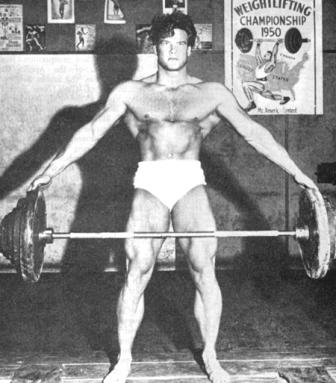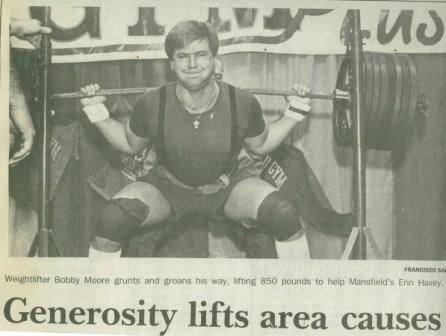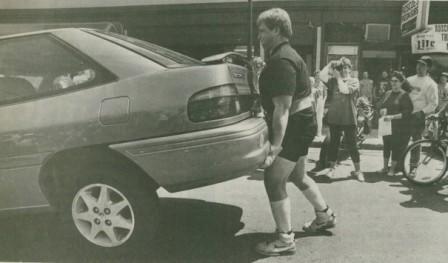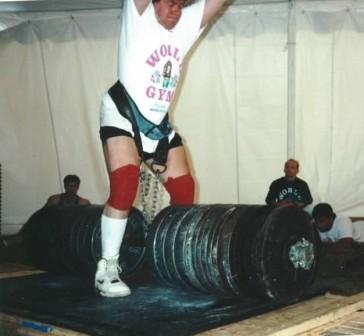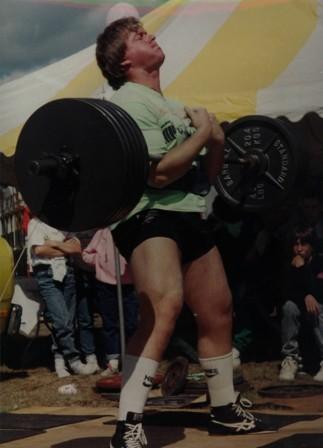National Postal Meet
Results of the National Postal Championships
by Al Myers
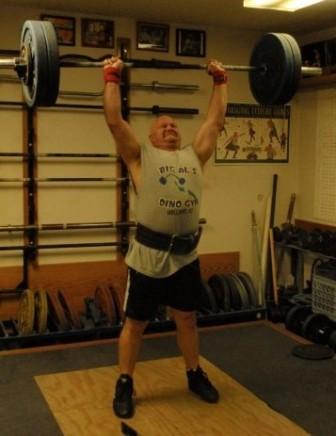
Defending 2008 National Postal Champion Chad Ullom wins Best Overall Lifter in the Men's Open Division this year.
Yesterday I received the results of the USAWA National Postal Championships which was held in December, 2009. I was pleased with the participation, which matched the same number of entries as this past year’s National Championships. John Wilmot was the Meet Director for this Postal Championships for the second straight year, which culminates his postal series of four postal meets throughout the year. The Best Lifters for this years Championships are as follows:
Women Juniors – Molly Myers
Men Juniors – Joe Ciavattone Jr.
Master 40-44 Age Group – Al Myers
Master 45-49 Age Group – Orie Barnett
Master 55-59 Age Group – Dennis Vandermark
Master 60-64 Age Group – John Wilmot
Master 65-69 Age Group – Denny Habecker
Master 80-84 Age Group – Art Montini
Men Overall Open – Chad Ullom
Men Overall Master – Al Myers
Men Overall – Al Myers
Congratulations to this year’s winners!
FULL MEET RESULTS:
2009 National Postal Championships
December 1st – 30th
Meet Director: John Wilmot
Some used the three official system while others used the one official system:
Art Montini – Officials: Denny Habecker, Scott Schmidt, and John McKean
Denny Habecker – Officials: Art Montini, Scott Schmidt, and John McKean
Kohl Hess – Officials: Art Montini, Scott Schmidt, and John McKean
Molly Myers – Official: Al Myers
Al Myers – Official: Chad Ullom
Dennis Vandermark – Official: John Monk Jr.
John Monk Jr. – Official: No certified official used
Joe Ciavattone Jr. – Official: Mike O’Brien
Jonathan Ciavattone – Official: Joe Ciavattone Sr.
Joe Ciavattone Sr. – Official: Mike O’Brien
Orie Barnett – Official: No certified official used
John Wilmot – Official: No certified official used
Lifts: Clean and Push Press, Zercher Lift, Deadlift – Ciavattone Grip
Results:
Women
| Lifter | Age | BWT | Wt Cls |
Push Press |
Zercher | Deadlift | Total | Points |
| Molly Myers |
11 | 128 | 60 | 60 | 85 | 175 | 320 | 506.59 |
Men
| Lifter | Age | BWT | Wt Cls |
Push Press |
Zercher | Deadlift | Total | Points |
| Al Myers |
43 | 257 | 120 | 264.5 | 407.7 | 462.7 | 1134.9 | 923.58 |
| Chad Ullom |
38 | 237 | 110 | 253.5 | 407.7 | 440.7 | 1101.9 | 898.60 |
| Joe Ciavattone Jr. |
16 | 207 | 95 | 200 | 325 | 365 | 890 | 858.19 |
| Orie Barnett |
48 | 228.6 | 105 | 188 | 330 | 415 | 933 | 845.10 |
| John Monk Jr. |
44 | 175 | 80 | 205 | 325 | 275 | 805 | 816.17 |
| Joe Ciavattone Sr. |
41 | 245 | 115 | 220 | 325 | 425 | 970 | 793.00 |
| Denny Habecker |
67 | 200 | 95 | 148 | 215 | 290 | 653 | 746.99 |
| John Wilmot |
62 | 212 | 100 | 135 | 205 | 335 | 675 | 718.25 |
| Jonathan Ciavattone |
15 | 207 | 95 | 145 | 230 | 300 | 675 | 680.46 |
| Dennis Vandermark |
56 | 206 | 95 | 95 | 225 | 285 | 605 | 621.99 |
| Art Montini |
82 | 181 | 85 | 80 | 158 | 200 | 438 | 592.83 |
| Kohl Hess |
15 | 264 | 120 | 130 | 215 | 290 | 635 | 563.75 |
“BWT” is bodyweight in pounds. “Wt Cls” is kilogram weight class. “Total” is total pounds lifted. “Points” is bodyweight and age adjusted points.
